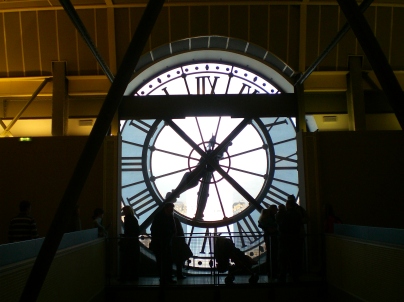A Quick Guide to Saint-Germain-des-Prés
Post by Jenny Bailey
When most people imagine 19th century Paris they usually picture artists in berets painting on easels, or bourgeois thinkers discussing the philosopher Descartes over a glass of red wine. Perhaps the picture in their head is of neither of these things but of impoverished writers sipping on absinthe in a typical Parisian café? Any of these images would be true to life, at least in painting a picture of
what the Saint-Germain-des-Près Faubourg was like at this time. In the 19th Century, this was the intellectual centre of Paris and home to some of the city’s greatest minds. Fast-forward centuries later and the area is still one of prettiest areas in Paris, with plenty of attractions for visitors to see and do. Here are some of the highlights:
Benedictine Abbey of Saint-Germain-des-Prés
The Faubourg takes its name from the Benedictine Abbey that used to stand here. However, nowadays it is only the church that still remains. This historic church dates all the way back to the 6th century and is the oldest in Paris. However, most people flock here to visit the tomb of Descartes who’s buried in one of the smaller side-chapels. In its earlier years this was the burial place for Merovingian kings and its gold roof led to it being known as the gilded Saint-Germain.
Jardin du Luxembourgis the second largest public park in Paris and a great place to while away a lazy afternoon. The gardens, which were built in 1612 for the queen consort Marie Medicis, are landscaped in an Italian baroque style and were designed by Jacques Boyceau. Originally built to keep the queen from feeling too homesick for Italy, they may have changed a lot in the past few centuries – they now include a play-area and tennis courts – but the palace and gardens have become quintessentially Parisian. Sculptures in the garden of Stendhal, Chopin, Montesquieu, Phidias, Baudelaire, Delacroix and Blanche of Castille are there to be admired, whilst the impressive Palace is now home to the French Senate.

Although there are plenty of Paris hotels to choose from in the Saint-Germain district, it’s rare to find one which is a tourist
attraction in its own right. However, Hotel Lutetia is no ordinary hotel. It was created in 1910 by two of the best known architects of the time and became the first art deco hotel in Paris. Since its construction, several famous artists and writers have either stayed here or made the building their home. These include Matisse, Picasso, Antoine de Saint-Exupery and General Du Galle, who spent his honeymoon in this building. Inside the lobby, there are works of art by more contemporary artists, such as Arman, Cesar and Thierry Bisch. This has to be one of the few hotels in Paris that have such a historic connection.
Located on the Left Bank of the Seine, the Musée d’Orsay is best known for its large collection of Impressionist and Post-Impressionist art. The museum, housed in a former railway station, contains famous pieces by Cezanne, Renoir, Degas, Monet and Van Gogh amongst others. There are 86 paintings by Monet and 81 by Renoir, (including his famous work, Montmartre) which makes this one of most important museums for fans of these two artists. There are also sculptures and collections pertaining to photography and architecture.

Those who visited Café Procope in the 18th century may have found themselves sitting on a table next to Voltaire, who it is said often drank 40 cups of coffee – mixed with chocolate – at this establishment every day. During this century, Benjamin Franklin, John Paul Jones and Thomas Jefferson were also regular visitors. Café Procope is still the oldest continually-running restaurant in Paris, having opened its doors for the first time in 1623. Since then it has seen many famous faces and almost as many scandals. In 1752, composer Rousseau publicly announced his retirement in the café, and explorer Alexander von Humboldlt was known to lunch here every day between 11am and noon. The restaurant serves traditional French meals and highlights include the coq au vin and calf’s head casserole.
Visitors that have already explored all the typical, traditional sights associated with Paris will find that the Saint-Germain district not only offers something new and unique, but provides a fascinating glimpse into a Paris of yesteryear.






Walked by Café Procope many times but never dined there. Was worried it would dissapoint and so I just continue to love it from the outside.
XO
Sam
That would be St. Germain des Prés (the meadows), not Près.
Heheheee! I like my little typo! It almost makes it sound like “Saint Germain close up”! 😉 Thanks for the correction.